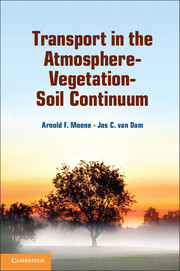Introduction
Whereas roughly 70% of Earth’s surface is covered by oceans, the remaining 30% of land has a profound influence on processes in the atmosphere (e.g., differential heating, drag, evaporation and resulting cloud formation, composition of the atmosphere). This impact is due to the large variability in the properties (e.g., albedo, roughness, soil type, land cover type, vegetation cover) and states (e.g., soil moisture availability, snow cover) of the land surface. The processes occurring at the land surface are often grouped under the terms biogeophysical and biogeochemical processes (Levis, 2010): they influence the state and composition of the atmosphere both through physical and chemical processes, and biological processes play an important role in both.
Although the interface between Earth and atmosphere is located at the surface, subsurface processes in the soil are of major importance because part of the energy and water exchanged at the surface is extracted from or stored in the soil. Plants play an important role in extracting water from deeper soil layers and providing it to the atmosphere. In return, processes in the soil and plants (e.g., transport of water, solutes, and energy) are strongly influenced by atmospheric processes (e.g., evaporation and precipitation).
